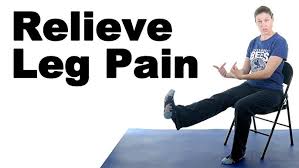What Exercises Should be Avoided With Osteoporosis?
Table of Contents
Introduction:
It is crucial to take physical activities carefully since osteoporosis is a disorder that causes weaker bones that are more likely to fracture. While regular exercise can help people with osteoporosis strengthen their bones, improve their balance, and feel better overall, some motions might make them more vulnerable to injury.
Preventing fractures requires knowing which workouts to avoid, particularly in the most often damaged regions of the spine, hips, and wrists. This guide lists the kinds of activities that might be dangerous and explains why a fitness program that is appropriate for people with osteoporosis should not include them.
Exercises Should be Avoided With Osteoporosis:
Running:
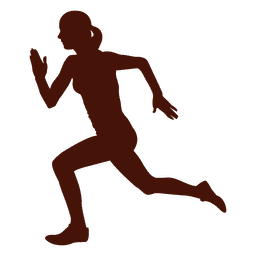
Repetitive pounding on hard surfaces while running, a high-impact cardiovascular activity, can cause serious strain on the lower limbs and spine. This effect may raise the risk of fractures, particularly in the hips and vertebrae, for those who have osteoporosis.
Running is typically not advised for people with extensive bone loss or a history of fractures, even if it can improve heart health. Low-impact exercises like swimming, cycling, or brisk walking are safer and better choices for preserving fitness without endangering bone health.
Jumping:

Exercises involving quick, intense movements that have a strong effect on the bones and joints include jumping jacks, jump squats, and box jumps. These sudden landings increase the risk of fractures for those with osteoporosis by putting undue strain on delicate bones, especially those in the spine, hips, and ankles.
Jumping is often dangerous for those with weak bones, even though it can help healthy people increase their bone density. To lower fracture risk while maintaining bone health, safer substitutes such as mild strength training or low-impact balancing training are advised.
Toe Touches:
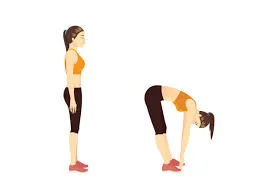
For people with osteoporosis, toe touches can be dangerous, particularly when done standing up and with a rounded back. Due to the forward bending and spinal flexion involved in this action, the vertebrae may be subjected to excessive stress, increasing the risk of compression fractures.
Exercises that demand a lot of bending or twisting of the spine should be avoided by those with weak bones. Instead, safer options for increasing flexibility without sacrificing bone safety include mild stretches that keep the spine neutral, including sitting hamstring stretches or lying leg stretches.
Sit-ups:

Repeated spinal flexion—the bending forward of the spine under pressure during sit-ups can be especially risky for people with osteoporosis. The vertebrae are severely strained by this movement, which raises the possibility of compression fractures, particularly in the lower back.
In addition to not supporting the spine, traditional sit-ups frequently promote bad form, which increases the chance of injury. To increase core stability without straining the spine, safer core-strengthening options like modified planks, pelvic tilts, or abdominal bracing are advised.
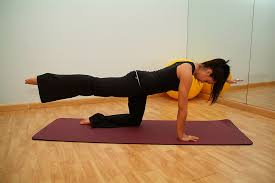
Although many of the conventional Pilates routines include spinal flexion, rotation, and extension, which may be dangerous for those with osteoporosis, Pilates can help improve posture, flexibility, and core strength. Exercises that put stress on the vertebrae, such as hundreds, roll-ups, and spine twists, raise the risk of spinal fractures.
It is important to adjust routines under the supervision of a qualified teacher who is aware of osteoporosis limits, even if not all Pilates movements are dangerous. Pilates is safer and more beneficial for bone health when it emphasizes neutral spine postures and low-impact routines.
Certain Yoga Pose:
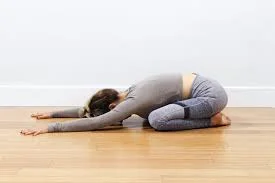
Although yoga can help with posture, flexibility, and balance, some positions can be dangerous for people who have osteoporosis. These movements include deep spinal flexion, twisting, or severe backbends. Pose challenges that require balance might also increase the risk of falling. However, yoga may still be a useful component of an osteoporosis-friendly fitness regimen if the right adjustments are made and the emphasis is placed on mild, spine-safe poses under expert supervision.
Tai Chi:
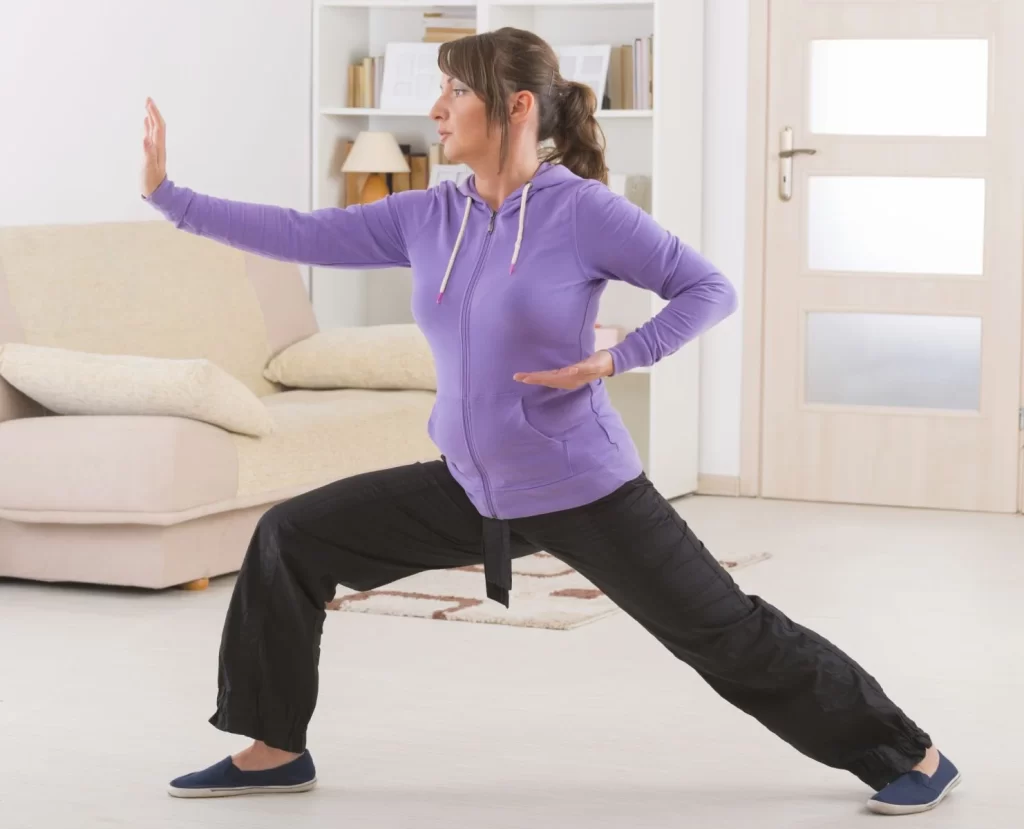
People with osteoporosis can benefit greatly from tai chi since it is a low-impact, slow-motion exercise that stresses balance, coordination, and controlled motions. It aids in enhancing stability, muscle strength, and posture, all of which are critical for preventing falls.
Tai Chi puts less strain on the bones and joints than fast-paced or high-impact exercises, which lowers the chance of fractures. Even though it’s usually safe, if balance is seriously impaired, it’s still crucial to execute actions correctly and under supervision. All things considered, Tai Chi is a mild and efficient kind of exercise for preserving bone health and range of motion.
Cycling:
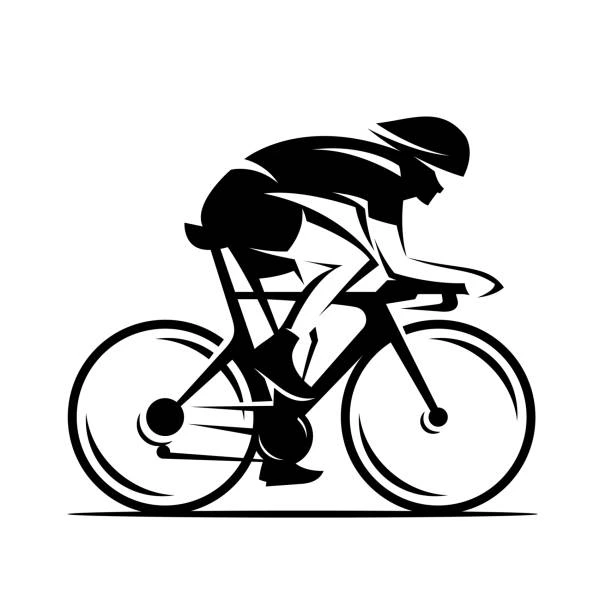
Although cycling is a well-liked, low-impact aerobic workout that is gentle on the joints, it might not be the best sport for people with osteoporosis. Cycling does nothing to increase bone density or promote bone formation because it is not a weight-bearing exercise.
Furthermore, there is a chance of falls when cycling outside, which can be harmful for people with weak bones. For optimum bone health, stationary cycling should be combined with weight-bearing activities like walking or resistance training, even though it can be a safer option for increasing leg strength and cardiovascular health.
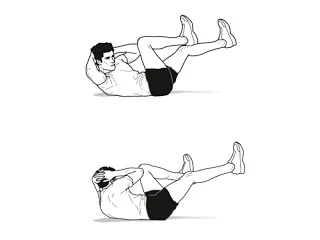
Similar to sit-ups, crunches require repeated spinal flexion, which can be detrimental to people who have osteoporosis. The front of the spine is stressed by this action, which raises the possibility of compression fractures, especially in the thoracic vertebrae. Crunches can injure already-weakened bones because of the force they produce.
Exercises that round the back should be avoided by those with osteoporosis. Instead, they should concentrate on core-strengthening exercises that keep the spine neutral, such as modified planks, pelvic tilts, and bird dogs.
Chest Fly:

Exercises involving chest flies, particularly when done incorrectly or with large weights, can put undue pressure on the shoulder joints and chest region, which may put undue tension on the ribs and upper spine, which are regions where osteoporosis patients are susceptible to fractures. The risk of damage increases if you extend your arms outward while lying on a bench with weights, since this might cause your spine to arch or become unsupported.
Chest flies should be done with modest weights, controlled action, and appropriate back support if they are incorporated into a workout. Resistance band chest presses and wall push-ups are safer substitutes that provide muscular engagement at a lower risk.
Chest Press:
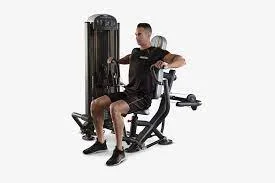
A strength-training exercise that works the triceps, shoulders, and chest is the chest press. Although it can aid in strengthening the upper body, those with osteoporosis need to exercise caution when doing it. Shoulders and the upper spine can be strained by doing chest presses incorrectly or with large weights, particularly if the back arches too far during the exercise.
Vertebral fractures may become more likely as a result. Using modest weights, maintaining perfect spinal alignment, and making sure the back is completely supported, for example, by using a bench with good lumbar support or by utilizing resistance bands, are all key ways to make chest presses safer for people with osteoporosis.
Knee Extensions:
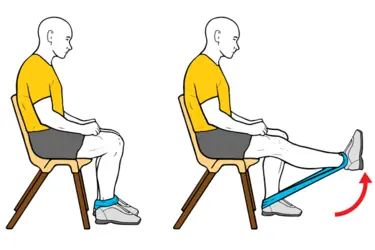
By using the lower legs to lift a weighted bar, knee extensions, which are usually done on a weight machine, isolate the quadriceps muscles. This exercise can help strengthen the thighs, but it can also put unnecessary pressure on the knee joints and, if done with a lot of resistance, strain the hips and lower back, which are areas that people with osteoporosis should be concerned about.
The risk of bone or joint damage might be further increased by jerky or poor form motions. Weight-bearing activities that increase bone density and leg strength, such as step-ups, mini squats, and sit-to-stand, are safer substitutes.
Seated Rows:
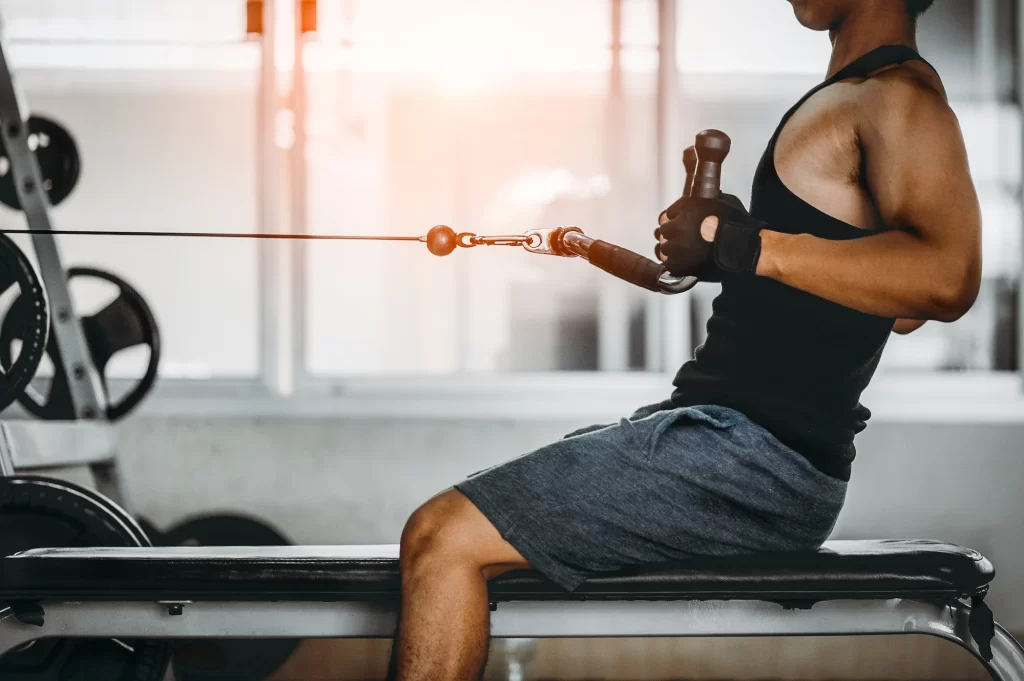
Individuals with osteoporosis may benefit from performing seated rows, a resistance exercise that works the arms, shoulders, and upper back, with good form. However, utilizing large weights or pulling too hard should be done carefully since this can put strain on the spine, particularly if the back curves during the exercise.
The key to reducing the risk of injury is to do the exercise carefully and under control, use mild to moderate resistance, and maintain a neutral spine. Seated rows are a typically safe alternative when adapted properly, since they may promote spinal health and aid with posture.
Hamstring Stretches:
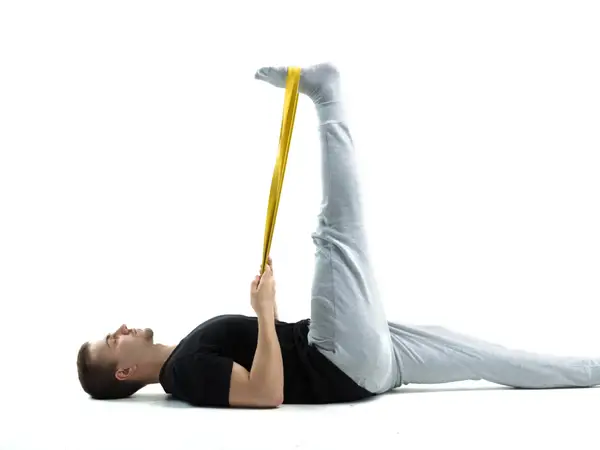
Although hamstring stretches are frequently used to increase thigh flexibility, some types of them can be dangerous for those who have osteoporosis. In particular, standing toe touches and other stretches that require bending forward at the waist with a rounded spine might put undue strain on the vertebrae and raise the risk of spinal compression fractures.
People with osteoporosis should do modified hamstring stretches, including lying on their back and slowly stretching one leg upward using a strap or towel, to comfortably stretch their hamstrings. These less risky substitutes preserve flexibility without endangering the health of the spine.
Back Stretches:
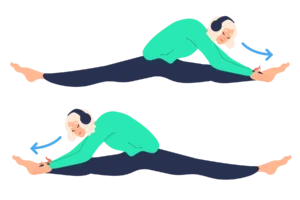
Although back stretches can increase mobility and reduce stress, some back stretches can be harmful to people who have osteoporosis. Activities that include twisting, strong back extensions, or deep spinal flexion (bending forward) can place undue strain on the vertebrae, raising the risk of compression fractures.
Avoid or alter stretches such as cobra posture, twisting stretches, and sitting forward bends. To preserve back flexibility while safeguarding delicate bones, it is better to perform mild stretches that keep the spine neutral, such as the cat-cow stretch or supported child’s pose.
Twisting Stretches:
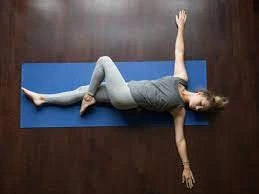
For people with osteoporosis, twisting stretches that rotate the spine to stretch the back and oblique muscles can be dangerous. These motions increase the risk of compression fractures by applying rotational force to the vertebrae, particularly in the lumbar and thoracic spine.
When twists are executed with force or in conjunction with forward bending, the danger increases even further. Although spinal mobility is vital, deep or unsupported twisting stretches should be avoided by those who have osteoporosis. Gentle range-of-motion exercises that keep the spine neutral and emphasize stability over rotation are safer substitutes.
Jump Squats:
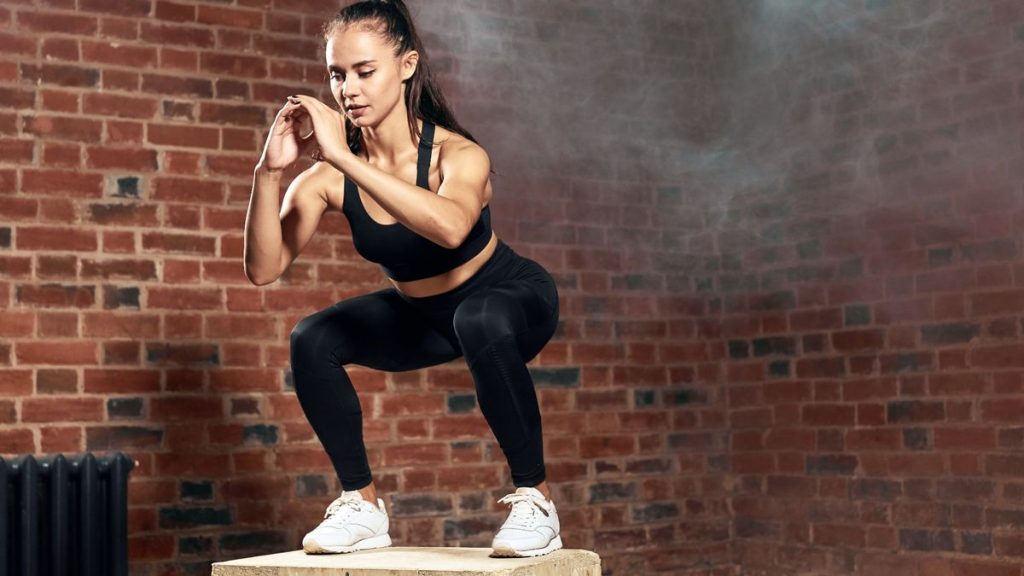
The sudden leaping and landing motions used in jump squats, a high-impact plyometric activity, may put a lot of strain on the hips, knees, and spine. This kind of violent impact raises the risk of fractures for those with osteoporosis, particularly in weight-bearing bones that may already be compromised.
It’s a risky option because of the quick motion and forceful landings, which can potentially cause joint damage or imbalance. Wall squats and controlled bodyweight squats are safer substitutes that promote lower body strength without endangering bone health.
Spine Twists:
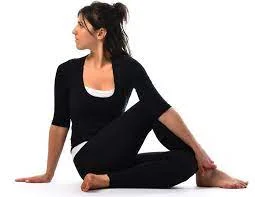
Spine twists, which are frequently used in Pilates and yoga exercises, rotate the body to increase flexibility and stretch the back. These twisting actions, however, can put detrimental stress on the vertebrae, particularly in the mid and lower spine, in those who have osteoporosis. Spinal compression fractures are more likely to occur when someone twists under strain or with poor posture. Although mild mobility exercises are crucial, twisting motions must be avoided or drastically altered. Exercises like abdominal bracing or bird dogs that increase core strength and spinal stability without rotation are safer substitutes.
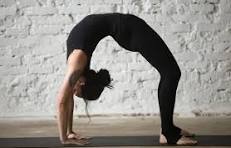
A popular deep backbend in yoga, the wheel position puts a lot of strain on the wrists, shoulders, and lower back in addition to extending the spine. This stance can be especially dangerous for people who have osteoporosis because it puts too much strain on the vertebrae, which raises the risk of spinal compression fractures.
Additionally, existing weak bones and joints may be strained by the power needed to elevate into the posture. To preserve a neutral spine and put safety first, people with osteoporosis should choose mild, supported stretches rather than dramatic backbending positions like the wheel pose.
Seated Forward Bend:
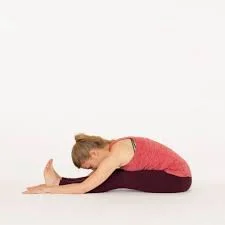
The seated forward bend, which is frequently included in yoga poses, is sitting with legs extended and bending forward from the hips to reach toward the toes. Because the forward flexion of the spine puts undue strain on the vertebrae and greatly raises the risk of compression fractures, this posture can be hazardous for those with osteoporosis.
This danger is increased when the back is rounded during the stretch. People with osteoporosis should employ modified hamstring stretches that keep the spine in a neutral, supported position instead of severe forward bends to ensure spinal safety.
Overhead Press:
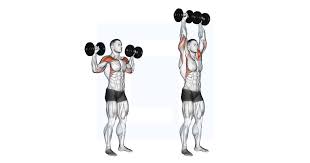
A strength-training exercise that targets the shoulders and upper arms, the overhead press entails raising weights over the head. Although this exercise is good for strengthening the upper body, people with osteoporosis may find it dangerous, particularly if they use large weights or perform it incorrectly.
Overhead pressing increases the risk of vertebral fractures or joint injuries by putting compressive stresses on the spine and straining the shoulders. If included, it should be performed with very small weights, with controlled action, and with good posture. To lessen the strain on the spine, it can be substituted with safer exercises such as wall push-ups or front raises.
High-Impact Aerobics:
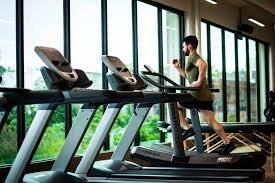
High-impact aerobics are strenuous exercises that repeatedly strain the bones and joints, such as leaping, hopping, or abrupt direction changes. These startling movements can greatly raise the risk of fractures for those with osteoporosis, especially those involving the hips, spine, and ankles. Weakened bones may be overpowered by the force produced during high-impact exercises, resulting in harm.
To enhance cardiovascular health without jeopardizing bone safety, low-impact exercises like swimming, walking, water aerobics, or moderate dance routines are advised in place of high-impact aerobics.
Conclusion:
Exercise is still essential for people with osteoporosis to preserve bone health, enhance balance, and lower their risk of falling. But it’s also critical to understand that some workouts may do more damage than gain. Movements involving high impact, spinal flexion, twisting, and high resistance can make weaker bones more prone to fractures.
People with osteoporosis can maintain their strength and level of activity without putting in danger the safety of their bones by avoiding these dangerous workouts and choosing safe, low-impact, and spine-friendly substitutes. A physical therapist or healthcare professional should always be consulted before beginning a new fitness regimen.
FAQs
Therefore, it was determined that certain weight-bearing and nonweight-bearing asanas, as well as pranayama and suryanamaskar, are beneficial in increasing bone mineral density (BMD) and that yoga activities have to be a significant part of any fitness program for osteoporosis therapy.
Although vitamin D alone cannot repair osteoporosis, it is essential for controlling and perhaps enhancing bone health, particularly when combined with other therapies and lifestyle modifications.
Weight-bearing should be a part of cardiovascular exercises to observe changes in bone density. Walking, running, and dancing are more successful than swimming and bicycling since they don’t need to bear weight, she explains. During your workout, it’s also critical to increase the intensity of your exercises.
The most important factor influencing osteoporosis and bone health is probably how quickly you walk. According to research, maintaining bone strength requires 30 to 60 minutes of vigorous walking five days a week at a minimum rate of 3 mph.
You may require additional calcium, typically in the form of supplements, if you have osteoporosis. For guidance on using calcium supplements, see your doctor. Vitamin D facilitates calcium absorption in the body. A daily intake of 10 micrograms of vitamin D is recommended for all individuals.
Life should generally be able to continue as usual, maybe with a few minor modifications. Osteoporosis does not always result in bone fractures. You may avoid pain and other chronic issues even if you break a bone.
Smoking, excessive alcohol use, and some medicines may further raise your risk. Rapid bone loss is more common in people who have undergone weight reduction surgery, hypogonadism, transplants, or who have taken drugs that are detrimental to the bones.
Osteoporosis: Your bones may deteriorate if you don’t move, which increases your chance of having poor bone density. Fractures and falls are particularly dangerous for older women.
Yes, planks can help patients with osteoporosis improve their abdominal muscles. They are safe for your lumbar and thoracic spines because they don’t demand bending the spine forward as a crunch or sit-up does.
Walking, running, and dancing are examples of weight-bearing activities that defy gravity and promote bone formation. By putting stress on the bones and encouraging the growth of new bone, resistance training such as lifting weights or using resistance bands also aids in the development of bone density.
According to recent studies, walking quickly is necessary to prevent osteoporosis and promote bone health. Do not give up if you have not been walking for a long time or if you walk slowly.
References:
- Farnsworth, C. (2023, June 16). What exercises should someone with osteoporosis avoid? https://www.medicalnewstoday.com/articles/what-exercises-should-be-avoided-with-osteoporosis
- Martin, M. (2023, October 23). Ten osteoporosis exercises to avoid. MelioGuide. https://melioguide.com/osteoporosis-prevention/osteoporosis-exercise-contraindications/
- Yetman, D. (2023, January 27). 4 Types of exercises and activities to avoid when you have osteoporosis. Healthline. https://www.healthline.com/health/osteoporosis/osteoporosis-exercises-to-avoid
- Osteoporosis: Exercises to avoid for best bone health. (n.d.). https://www.getwellen.com/well-guide/exercises-to-avoid-if-you-have-osteoporosis
- Dumain, T. (2022, October 20). Exercises to Avoid with Osteoporosis: The Types of Workouts You Probably Shouldn’t Do. CreakyJoints. https://creakyjoints.org/diet-exercise/exercises-avoid-with-osteoporosis/
- Joan. (2021, October 29). What are osteoporosis exercises to avoid? — Joan Pagano Fitness. Joan Pagano Fitness. https://www.joanpaganofitness.com/aging-gracefully-blog/2021/8/26/what-are-osteoporosis-exercises-to-avoid
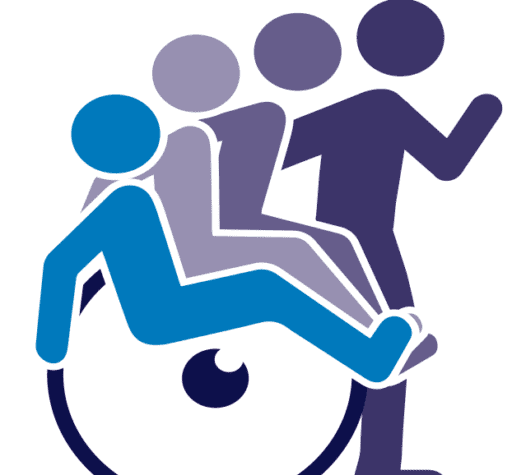
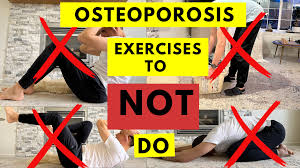
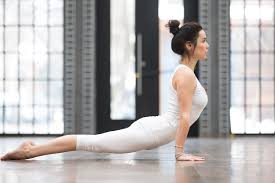

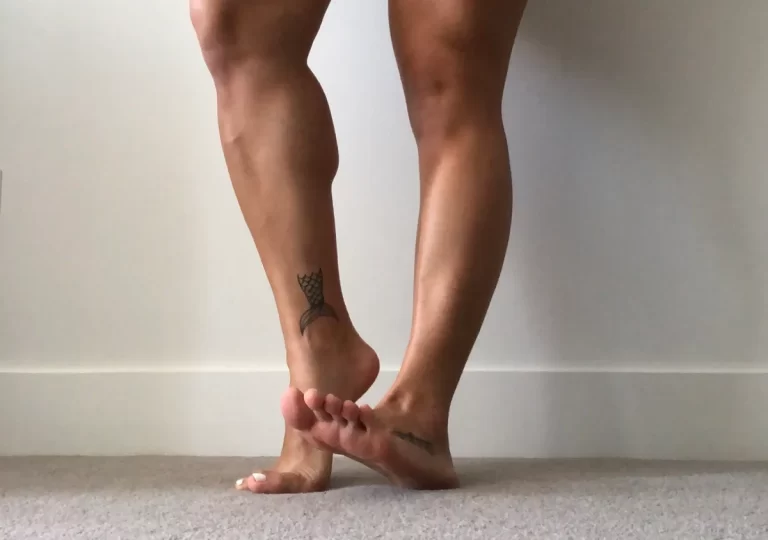
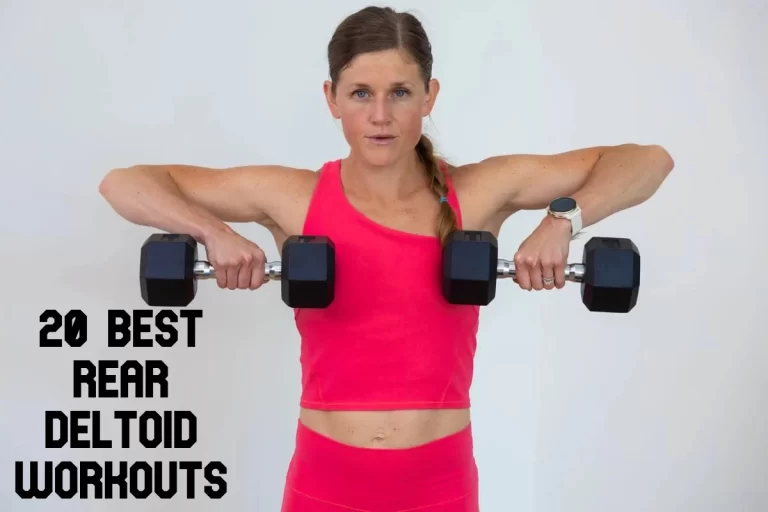
![Downward Facing Dog Pose[Adho Mukha Svanasana]](https://mobilephysiotherapyclinic.net/wp-content/uploads/2023/12/Downward-Facing-Dog-PoseAdho-Mukha-Svanasana.webp)
